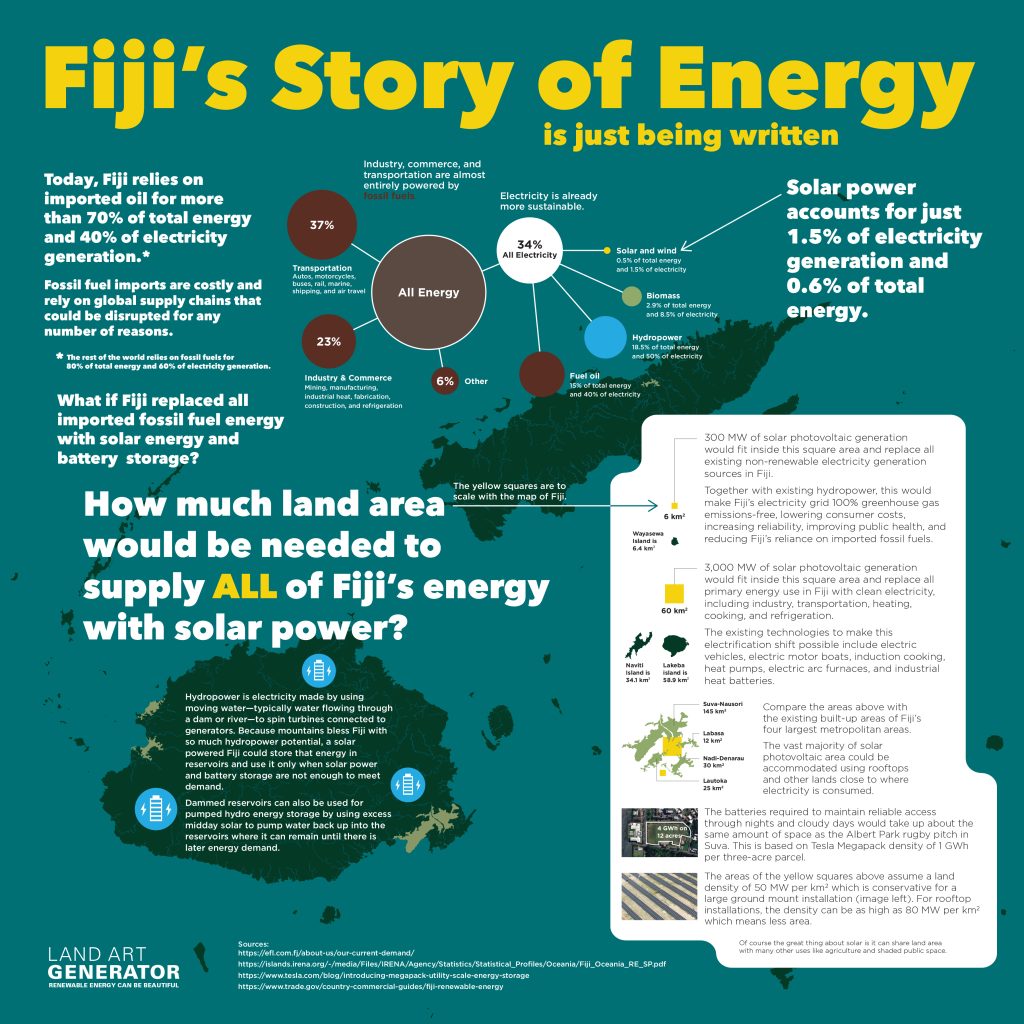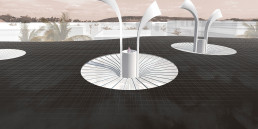How can Fiji transition to 100% clean energy?
Fiji’s 20-year National Development Plan calls for all power to be generated from renewable sources by 2030 and to achieve net-zero emissions by 2050.
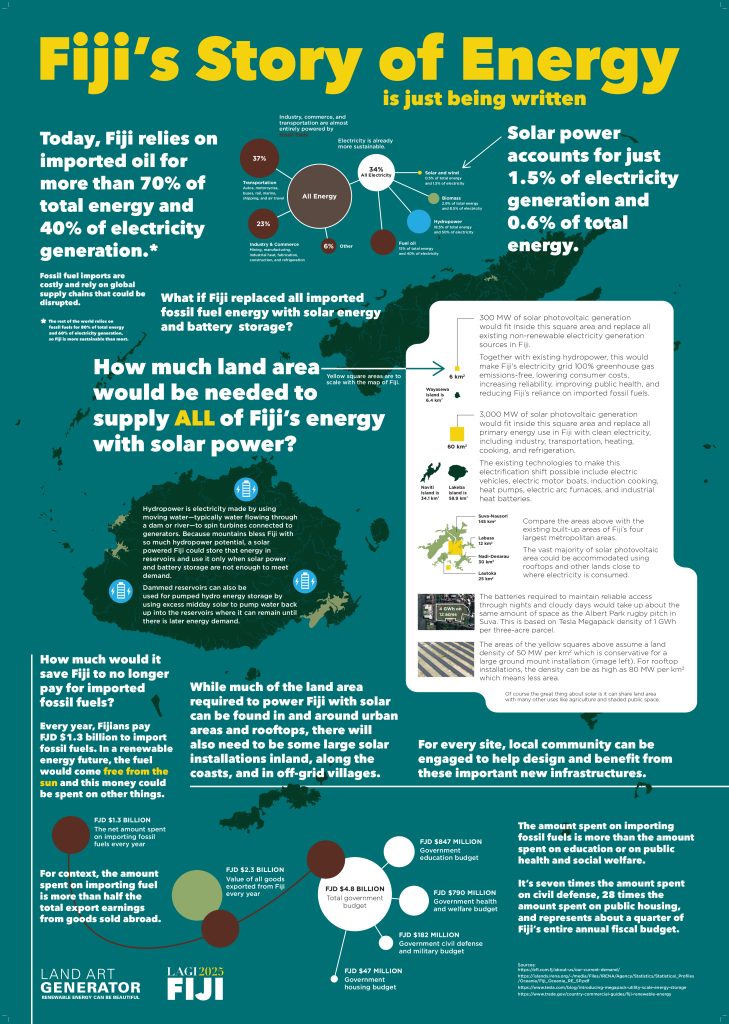
Like nearly all island nations, Fiji relies on imported oil for much of its energy. In fact more than 70% of total energy and 40% of electricity generation are powered by burning fossil fuels. The rest of the world relies on fossil fuels for 80% of total energy and 60% of electricity generation, so Fiji is already more sustainable than most. As for historical emissions, Fiji is only responsible for 0.006% of global CO2. The reasons for Fiji to transition from fossil fuels to clean energy have very little to do with climate mitigation and nearly everything to do with resilience, quality of life, and economic security.
Fossil fuel imports are costly and rely on global supply chains that could be disrupted with little notice. Today, industry, commerce, and transportation are almost entirely powered by fossil fuels. Solar power accounts for just 1.5% of electricity generation and 0.6% of total energy.
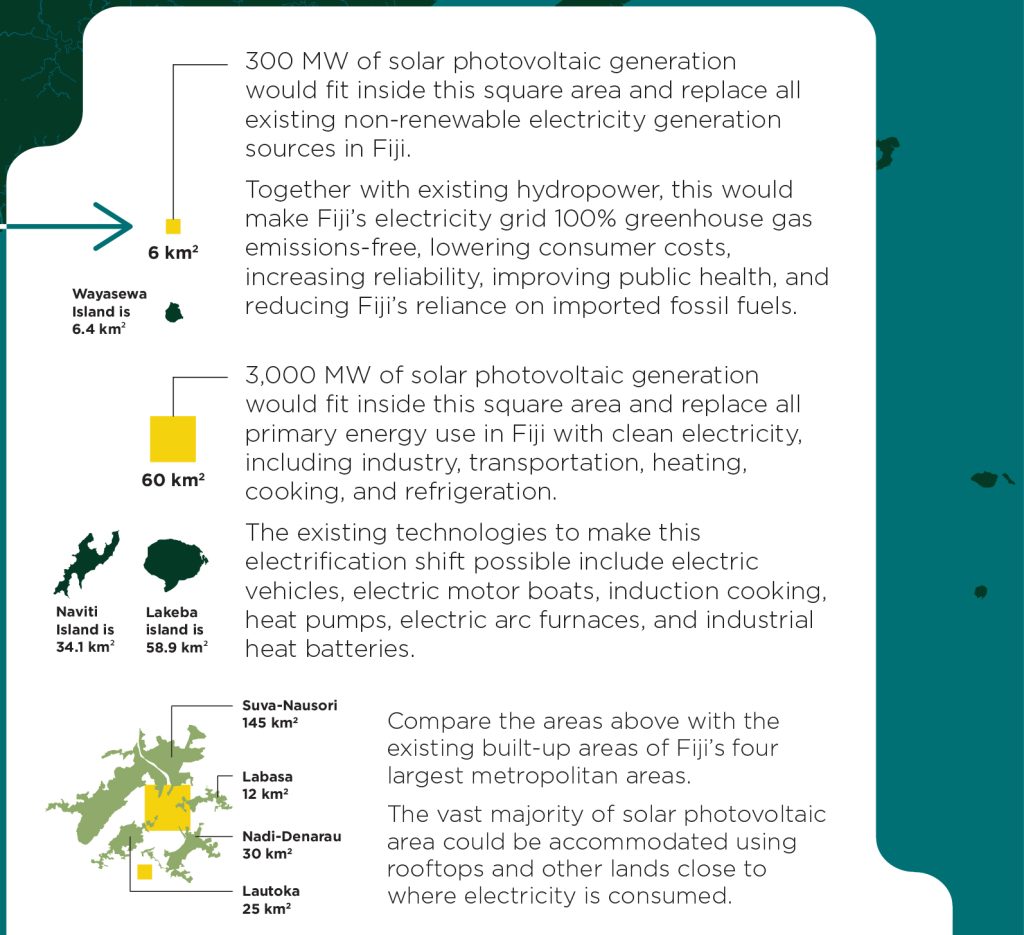
How can solar play a part?
As a thought experiment, we decided to ask: What if Fiji replaced all imported fossil fuel energy with solar energy and battery storage? What would that look like? How much land area would be needed to supply all of Fiji’s energy with solar power? Electricity, transportation, industry, and commerce?
It turns out to be not that much land area—considerably less than the already built-up areas of Suva, Nadi, Lautoka, and Labasa.
300 MW of solar photovoltaic generation would fit inside the small yellow square area (6 square kilometers). This would replace all existing non-renewable electricity generation sources in Fiji. Together with existing hydropower, this would make Fiji’s electricity grid 100% greenhouse gas emissions-free, lowering consumer costs, increasing reliability, improving public health, and reducing Fiji’s reliance on imported fossil fuels.
3,000 MW of solar photovoltaic generation would fit inside the larger yellow square area (60 square kilometers) and replace all primary energy use in Fiji with clean electricity, including industry, transportation, heating, cooking, and refrigeration. This would make the entire country net-zero. The existing technologies to make this electrification shift possible include electric vehicles, electric motor boats, induction cooking, heat pumps, electric arc furnaces, and industrial heat batteries.
The vast majority of solar photovoltaic area could be accommodated using rooftops and other lands close to where electricity is consumed. The areas of the yellow squares assume a land density of 50 MW per km2 which is conservative for a large ground mount installation (image left). For rooftop installations, the density can be as high as 80 MW per km2 which means less area. Of course the great thing about solar is it can share land area with many other uses like agriculture and shaded public space.
The batteries required to maintain reliable access through nights and cloudy days would take up about the same amount of space as the Albert Park rugby pitch in Suva. This is based on Tesla Megapack density of 1 GWh per three-acre parcel.
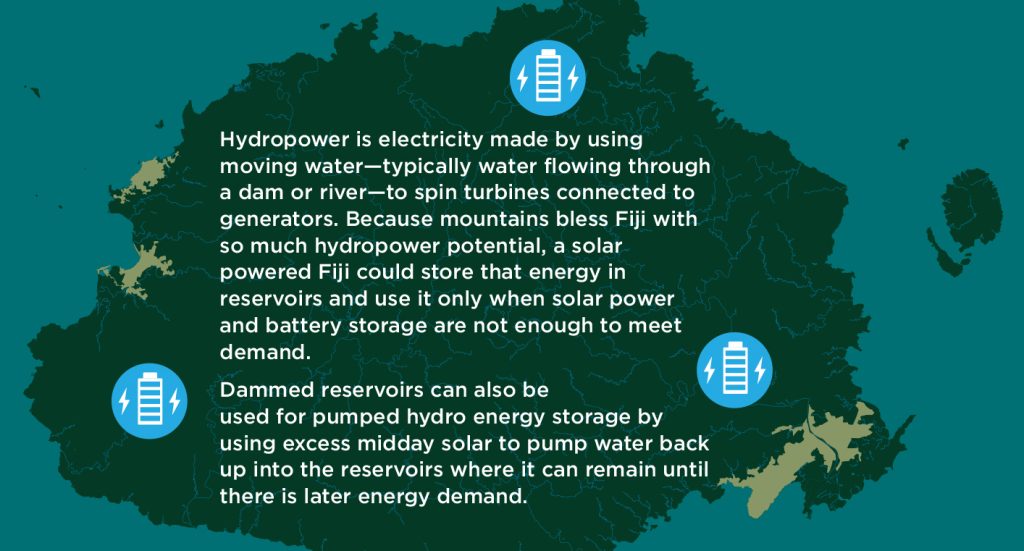
The blessings of hydropower
Energy storage needs in Fiji would be supported by the nation’s mountainous terrain. Hydropower is electricity made by using moving water—typically water flowing through a dam or river—to spin turbines connected to generators. Because mountains bless Fiji with so much hydropower potential, a solar powered Fiji could store that energy in reservoirs and use it only when solar power and battery storage are not enough to meet demand.
Dammed reservoirs can also be used for pumped hydro energy storage by using excess midday solar to pump water back up into the reservoirs where it can remain until there is later energy demand.

Does this make economic sense?
How much would it save Fiji to no longer pay for imported fossil fuels? Every year, Fijians pay FJD $1.3 billion to import fossil fuels. In a renewable energy future, the fuel would come free from the sun and this money could be spent on other things.
For context, the amount spent on importing fuel is more than half the total export earnings from goods sold abroad. The amount spent on importing fossil fuels is more than the amount spent on education or on public health and social welfare. It’s seven times the amount spent on civil defense, 28 times the amount spent on public housing, and represents about a quarter of Fiji’s entire annual fiscal budget.
By one estimate it would take around $10 billion USD to transition Fiji to net-zero. If the money spent on fuel imports could go instead to build the new energy system, it would take 20 years to complete.

Designing solar with community
While much of the land area required to power Fiji with solar can be found in and around urban areas and rooftops, there will also need to be some large solar installations inland, along the
coasts, and in off-grid villages. For every site, local community can be engaged to help design and benefit from these important new infrastructures.
To learn more about what the co-creation of solar infrastructure can look like, see the LAGI 2025 Fiji design competition, where hundreds of creative teams from 45 countries responded to a design brief that was co-written by the residents of Marou Village, in Fiji’s Yasawa Islands.
This information graphic was made on the occasion of the opening of the LAGI 2025 Fiji exhibition at the Fiji Arts Council in Suva, Fiji. The opening is on Thursday, November 6, 2025 and everyone is welcome!
